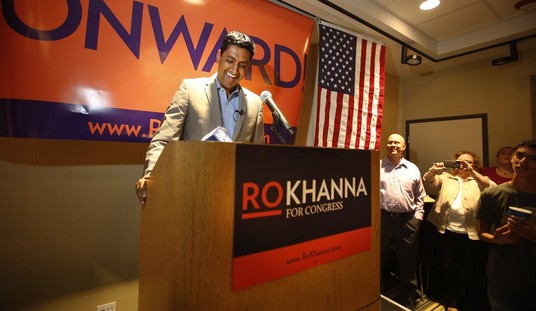Talk about a letdown. The Trump administration announced that it would simplify vaccination priorities for the Pfizer and Moderna vaccines, while releasing the federal reserve meant to preserve enough for necessary second doses. It turns out that the strategic dose reserve had already been emptied after that strategy had been changed quietly earlier:
When Health and Human Services Secretary Alex Azar announced this week that the federal government would begin releasing coronavirus vaccine doses held in reserve for second shots, no such reserve existed, according to state and federal officials briefed on distribution plans. The Trump administration had already begun shipping out what was available beginning at the end of December, taking second doses directly off the manufacturing line.
Now, health officials across the country who had anticipated their extremely limited vaccine supply as much as doubling beginning next week are confronting the reality that their allocations will not immediately increase, dashing hopes of dramatically expanding eligibility for millions of elderly people and those with high-risk medical conditions. Health officials in some cities and states were informed in recent days about the reality of the situation, while others are still in the dark.
Because both of the vaccines authorized for emergency use in the United States are two-dose regimens, the Trump administration’s initial policy was to hold back second doses to protect against the possibility of manufacturing disruptions. But that approach shifted in recent weeks, according to the officials, who spoke on the condition of anonymity because they were not authorized to discuss the matter. The result is that next week’s allocations will remain flat.
This isn’t all bad news. The reason that HHS shipped out the strategic reserve, the Washington Post reports, is because they have increased confidence in the production and distribution channels. The only reason to hold back those doses and severely limit vaccination access was to make sure we had a steady supply. Now that we know that production will meet the demand, there’s no reason to ration — at least at the federal level.
The bottleneck wasn’t at the federal level anyway, however. The states control how their allocated doses get used, and thus far their performance hasn’t exactly been stellar. The Associated Press tried laying this off on red state/blue state and regional issues, but Jim Geraghty points out that using proper statistical analysis techniques reveals a picture that is much more about individual state competence:
If you use the measuring stick of Bloomberg’s percentage of allocated doses used, Alabama ranks last of the 50 states and Georgia ranks 48th. But Mississippi ranks 30th and South Carolina ranks 29th — slightly below the middle of the pack. Nothing to brag about, but not notably bad, or warranting national scorn.
By the measurement of doses used, other states in other parts of the country are comparably bad. The country’s most populated state and the one we’re constantly reminded would be the world’s fifth-largest economy all by itself, California, ranks 49th. As I noted yesterday, my home state of Virginia is fourth from the bottom, and on the current pace, will have every adult in the state vaccinated by the summer of 2023. Alaska, Idaho, and Hawaii are only a little bit ahead of those at the bottom.
But let’s say that for some reason, you don’t like the measuring stick of “how many allocated doses have been administered so far.” Let’s say you prefer measuring vaccinations per 100,000 residents, as the CDC does. Yes, Alabama ranks dead last, at 1,882 vaccinations per 100,000 residents, the only one below 2,000. But Georgia, Mississippi, and South Carolina are in the 2,000 to 3,000 range, along with eleven other states — including California, Washington State, Wisconsin, New Jersey. Not good, but not particularly bad, and there’s no particular geographic, political, economic, or cultural factor across those states.
And the states at the top of the Bloomberg list, as of this writing, are West Virginia, North Dakota, South Dakota, Rhode Island, Louisiana, the District of Columbia, and Connecticut, who have all used more than half of their allocated vaccines so far.
So the states at the top of the list — the best performers, in other words — are the only states past the 50% of allocation marker. My state, Minnesota, has only administered 34.8% of their allocation. Even the most efficient state, West Virginia, still has more than 20% of its allocations left on the shelf so far. The issue isn’t supply, and it’s not demand — it’s efficiency, and that’s an issue for the states to solve.
Or maybe not. The incoming Biden administration wants to set up more direct federal handling of vaccinations, which might make sense in low-efficiency states like California and Virginia as well as Alabama and Georgia. The new administration might just be better off handing the doses to private-sector pharmacy chains and telling them to vaccinate people who show up regardless of priority. As I wrote yesterday, the path to full reopening of America is herd immunity through vaccination, which the rigid prioritizations are delaying unnecessarily. If the supply comes fully on line, let it meet the demand — and the best way to accomplish that is through the distribution channels already in place.







Join the conversation as a VIP Member